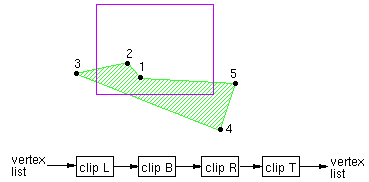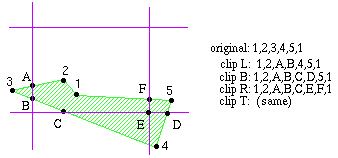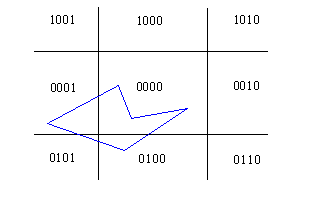Polygon Clipping
[Hearn & Baker: p. 237-242. Foley & van Dam: p. 124-127]
The Sutherland-Hodgman algorithm can be used to clip any polygon (convex
or concave) against any convex clipping polygon. The algorithm clips against
one edge at a time, producing a new vertex list each time. The following
figure assumes the most common case, a rectangular clipping window.

The algorithm can be summarized as follows:
for each side of clipping window
for each edge of polygon
output points based upon the following table

Example

Using Outcodes for Trivial Accept and Reject
In many cases, two trivial tests can be used to quickly determine whether
a polygon is completely inside or outside the viewing window. This then
allows us to skip the above clipping procedure. The trivial tests
require first computing outcodes.
A vertex outcode consists of four bits: TBRL, where:
-
T is set if y > top,
-
B is set if y < bottom,
-
R is set if x > right, and
-
L is set if x < left.
Trivial accept: all vertices are inside
(all outcodes are 0000)
Trivial reject: all vertices are outside
with respect to any given side(bitwise AND is not 0000)




